
Culture
10:40, 21-Apr-2018
Protecting Tibetan antelopes: The mountain rangers of Hoh Xil
By Tao Yuan
02:25
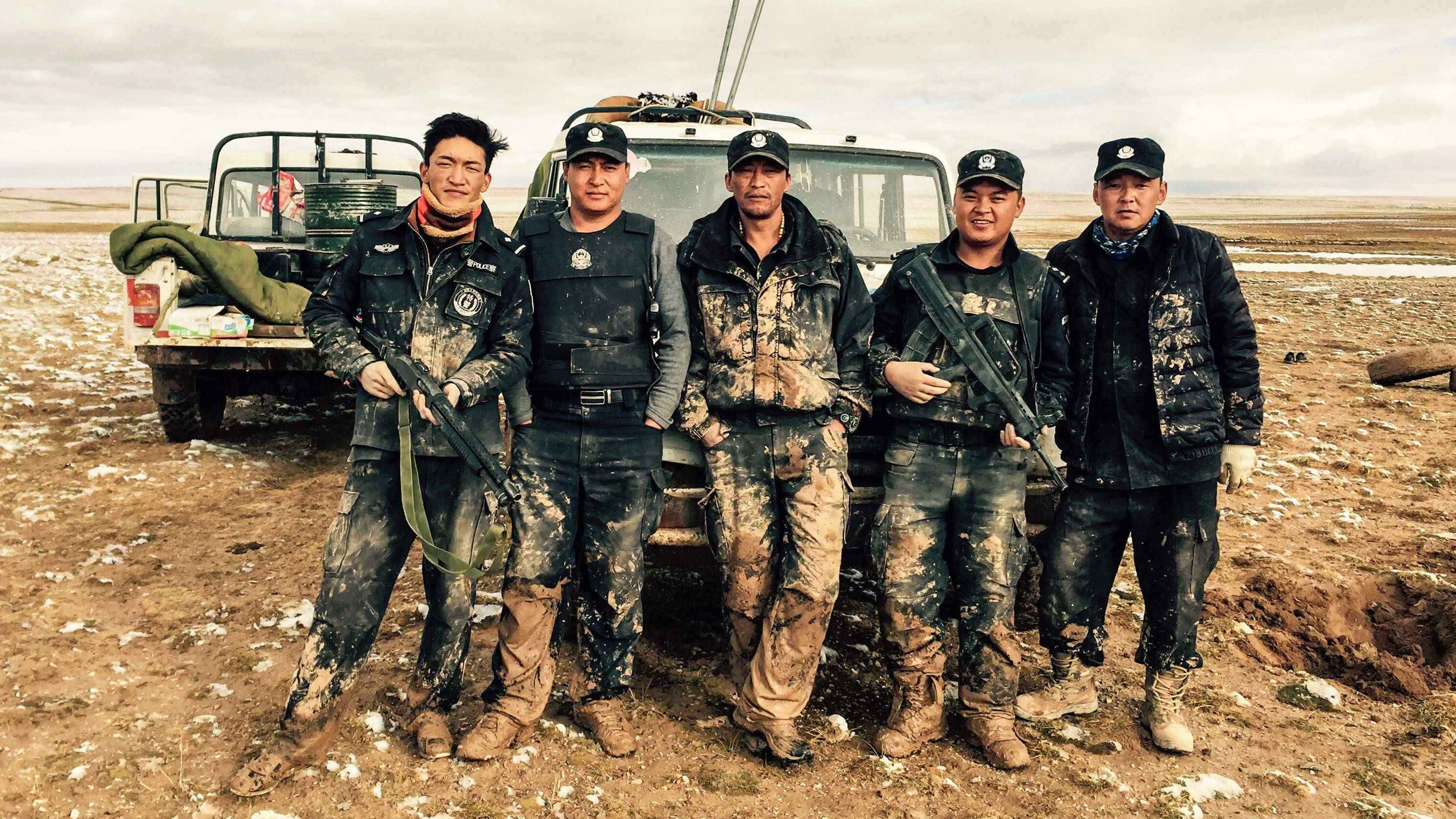
Hundreds of Tibetan antelopes gallop, startled. A jeep chases after them. Gunshots fire from the windows. One antelope collapses, writhes. Ground turns red. The animal stops moving.
This was a scene that was once all too familiar in Hoh Xil, a no-man zone high on China’s Qinghai-Tibet Plateau. In the 1980s up until the early 2000s, poachers nearly wiped out the species in pursuit of their prized underfur, which was woven into yarn to make extravagant shawls known as shahtoosh, a Persian word meaning "king of fine wools.” Several Tibetan antelopes would have to die for every shahtoosh.
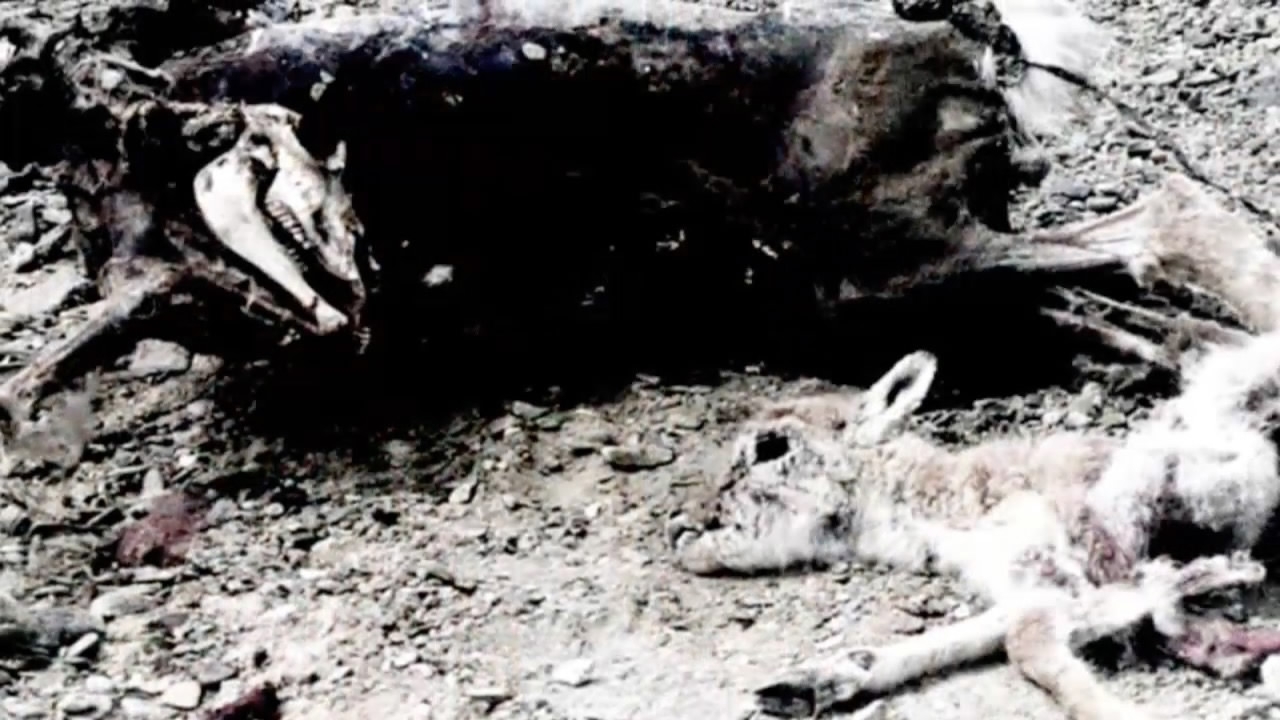
Tibetan antelopes killed for their prized fur. / Photo courtesy of Hoh Xil National Nature Reserve Management Bureau
Tibetan antelopes killed for their prized fur. / Photo courtesy of Hoh Xil National Nature Reserve Management Bureau
This is the memory that keeps rangers like Legdup Tshegyal going. “It’s almost like a faith,” he says. The young man from the nearby Yushu Tibetan Autonomous Prefecture has a look of typical Tibetan – dark-skinned and sturdy. “It’s hard for me to leave her.” Hoh Xil is a Mongolian word for “pretty girl.”
During our conversation, Legdup Tshegyal and his colleagues repeatedly mentioned a name like chanting a mantra, Suonandajie, their predecessor who was shot and killed by poachers while protecting Tibetan antelopes. Their conservation station in Hoh Xil was named after him. “His spirit continues to inspire us,” says Xie Ancheng, another ranger.
In a sense, the rangers’ work today has become much less perilous than that of their role model’s – the poachers have long been driven out, and the wildlife population is slowing replenishing.
Every day, Legdup Tshegyal and his nine colleagues take turns looking after the several-month-old baby Tibetan antelopes they raise in the backyard of the station – they rescue several every year, the ones who’ve lost their mothers, or are too weak that their mothers have given up on them.
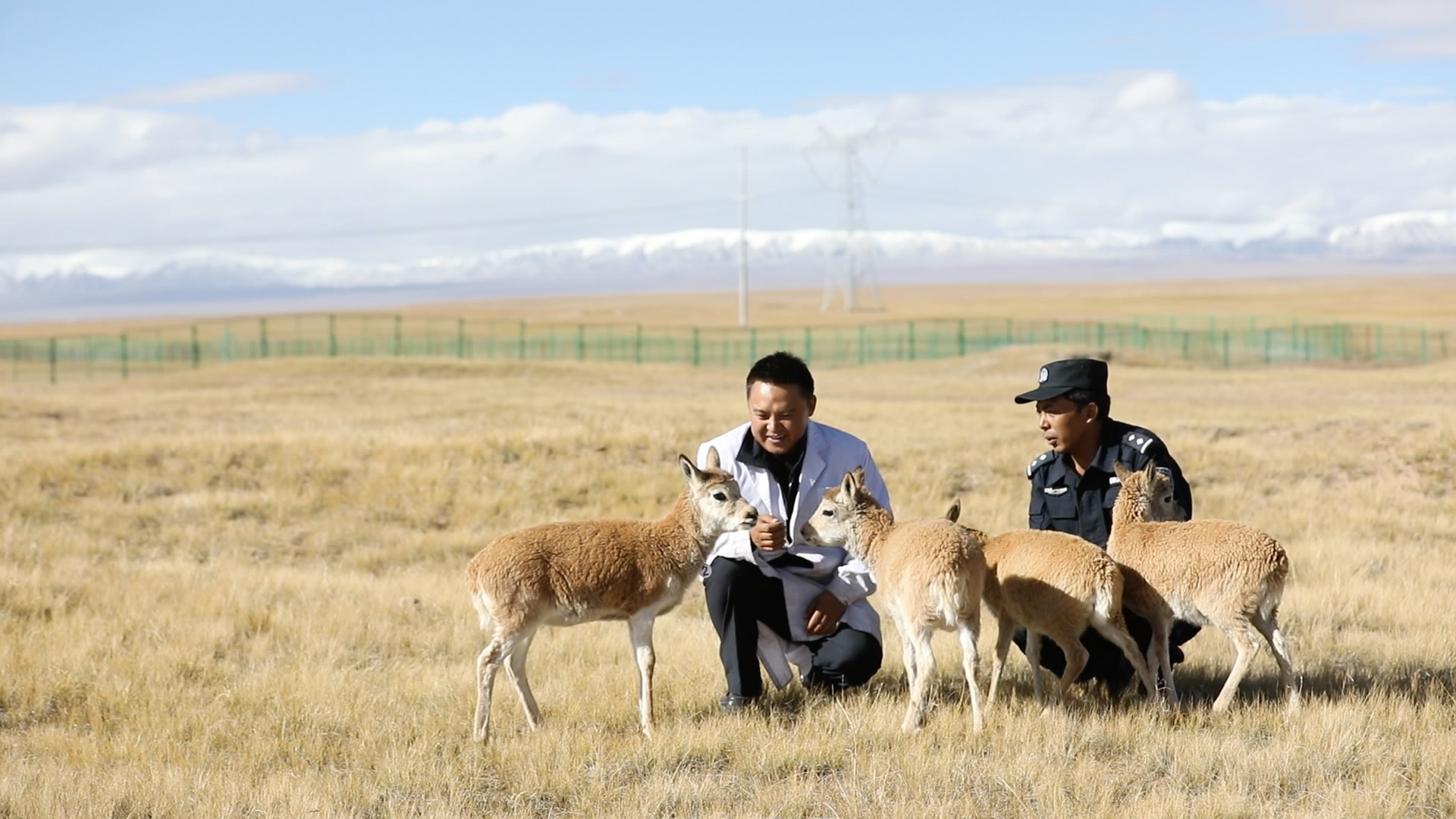
Rangers of Hoh Xil play with young Tibetan antelopes they rescued. / CGTN Photo
Rangers of Hoh Xil play with young Tibetan antelopes they rescued. / CGTN Photo
“This work makes it hard for us to start a family,” says Xie, as he bottle-feeds the baby antelopes. “But we have them. They are like our children.”
“It’s a privilege to work here,” says Legdup Tshegyal. Hoh Xil was cited as a UNESCO World Heritage Site in 2017 for its sweeping beauty and rich biodiversity.
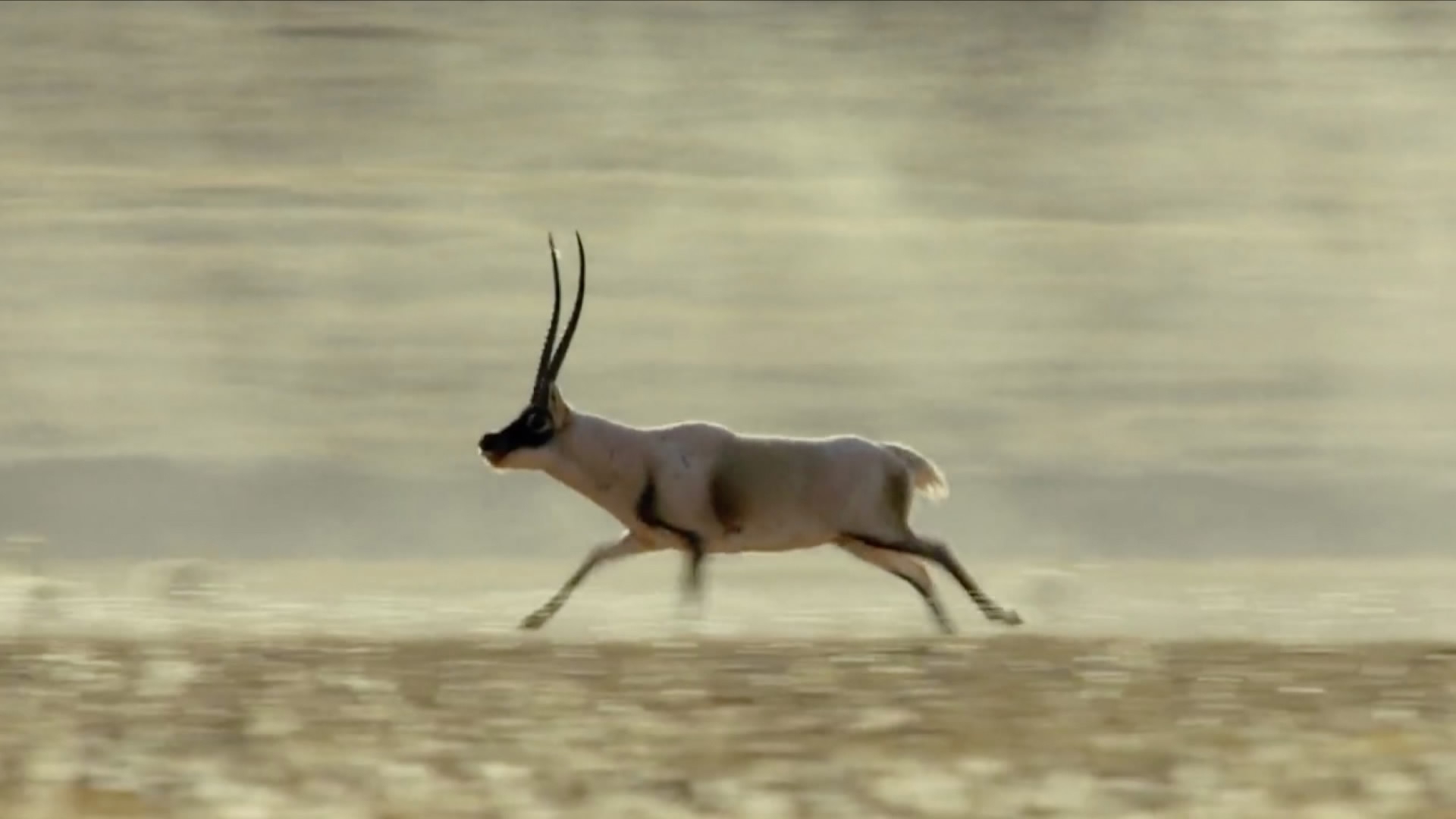
A male Tibetan antelope galloping. The bovid is native to the Qinghai-Tibet Plateau. / Photo courtesy of Qinghai Radio & TV Station
A male Tibetan antelope galloping. The bovid is native to the Qinghai-Tibet Plateau. / Photo courtesy of Qinghai Radio & TV Station
In fact, life here is anything but idyllic.
“People come here and ask me to tell a memorable story. I hate that,” says Legdup Tshegyal. “Every day is a memorable story. Every trip into the mountains is a memorable story.”
The 10 men patrol an area of more than 600 square kilometers of rugged mountains, lakes and boggy swamps, with an average altitude of 4,500 meters above sea level.
When they took us out on a short adventure, our vehicle got stuck in the mud almost immediately after we ventured out of the station.
“If we were on foot,” Legdup Tshegyal says, “we could’ve easily been swallowed.”
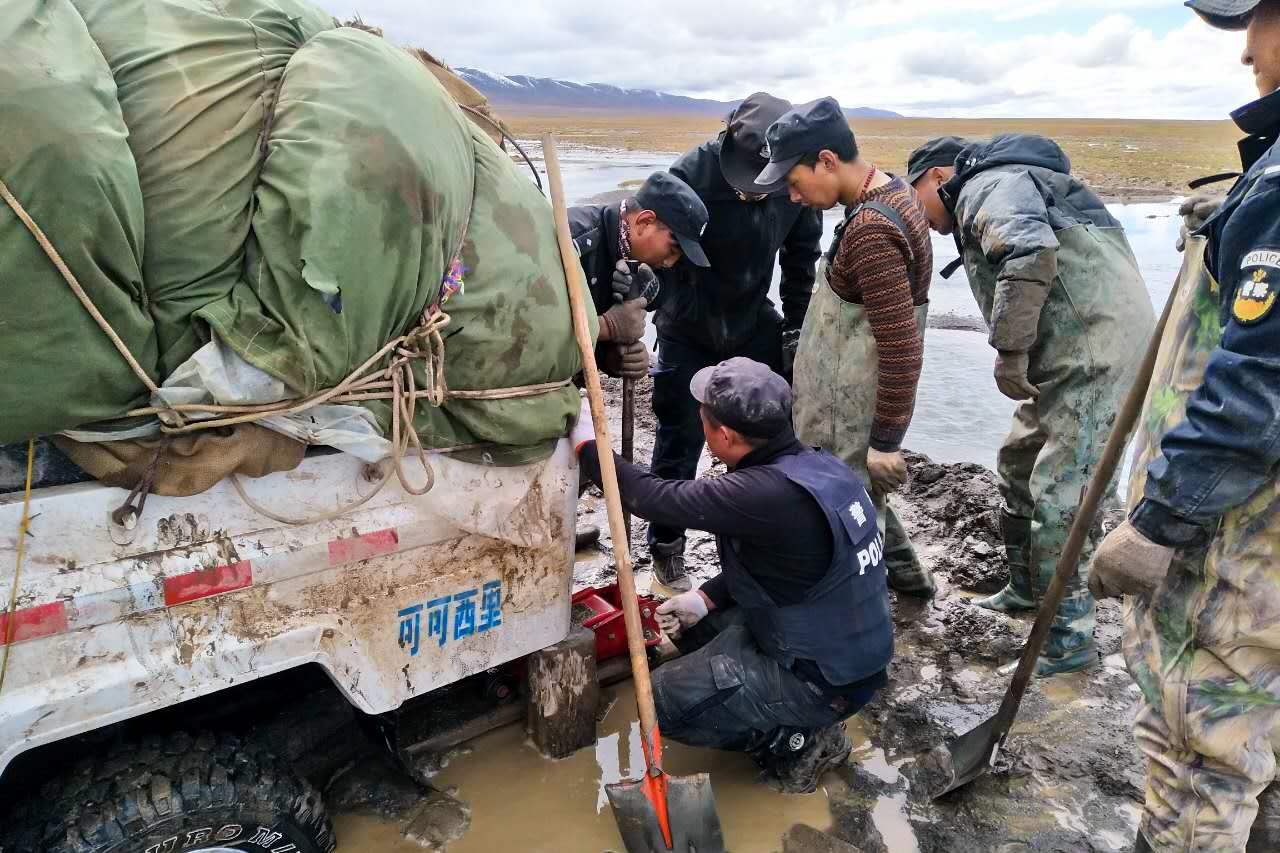
Rangers of Hoh Xil unstuck their vehicle from mud. / Photo courtesy of Legdup Tshegyal
Rangers of Hoh Xil unstuck their vehicle from mud. / Photo courtesy of Legdup Tshegyal
This is something they have to deal with on a daily basis.
Without the city reporters following them around, struggling with every breath, the rangers often camped out while on patrol, sometimes for weeks, surviving on instant noodles and melted snow. In the winter, the temperatures could drop to as low as minus 40 degrees Celsius.
Getting trapped in the snow, or a slip of the tire, could cost their lives.
“I never experienced life and death in the military,” says Xie, a veteran. “It is here that I understood the meaning of that, knowing that my brothers have got my back,” he turns his head to look at Legdup Tshegyal and the other rangers.
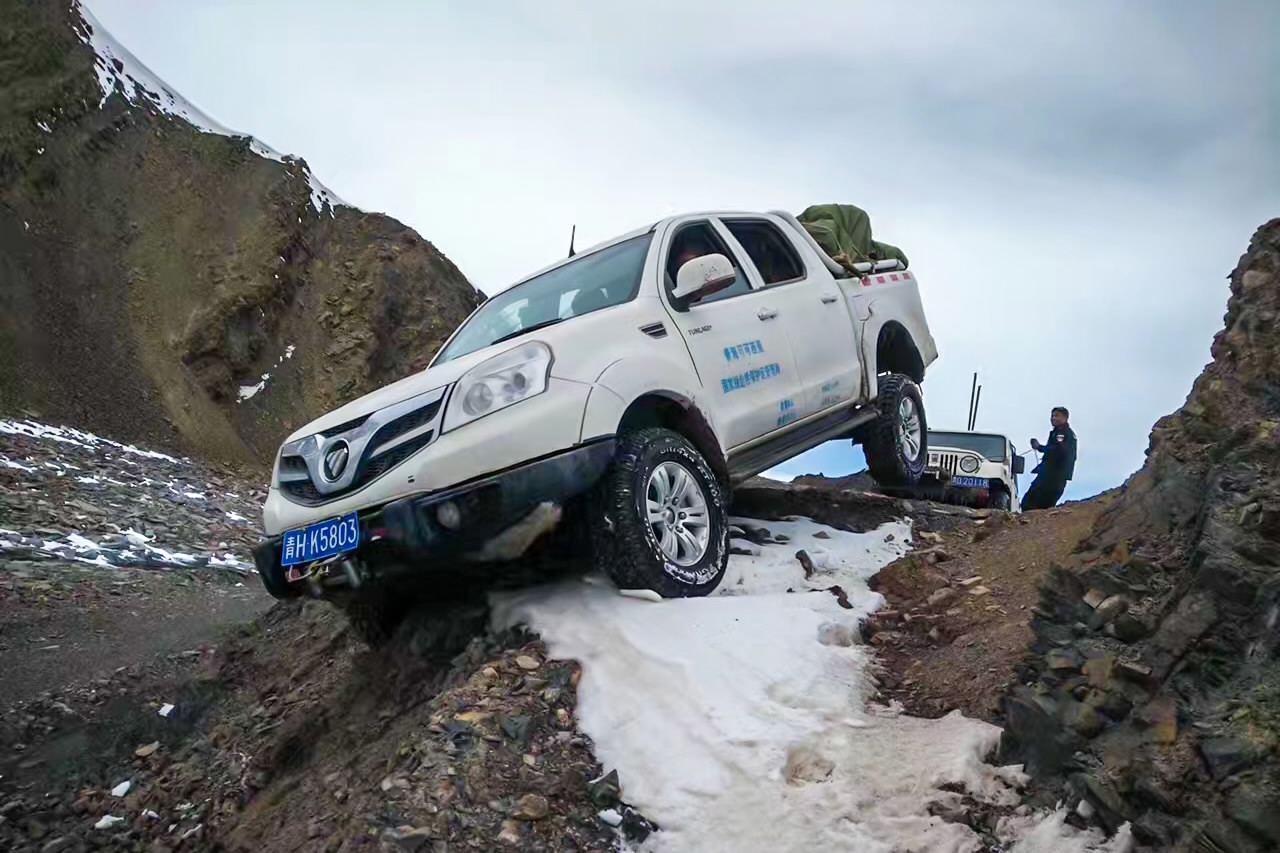
Vehicle carrying Hoh Xil rangers hangs precariously on a slope. / Photo courtesy of Xie Ancheng
Vehicle carrying Hoh Xil rangers hangs precariously on a slope. / Photo courtesy of Xie Ancheng
But now is a peaceful moment.
The sun sets on the grassland, casting a golden glow on the rangers and their baby antelopes. The men pet the animals. They take a stroll in the yard.
“Would saving these seven babies do anything to help preserve the entire population?” I asked.
“I don’t care,” says Legdup Tshegyal. “We Tibetans are a nomadic people. What we eat and drink come from nature. We live by the mountains and waters. Nature gave us all we have,” he looks at the antelopes. Their fur catches the sunlight and shines.
“Seeing an animal’s life at risk without rushing to save it, it’s not something I’m capable of,” he pauses. “If I give up on a life, what would be the meaning of my term here? What would be the meaning of my brothers’ term here?”

SITEMAP
Copyright © 2018 CGTN. Beijing ICP prepared NO.16065310-3
Copyright © 2018 CGTN. Beijing ICP prepared NO.16065310-3